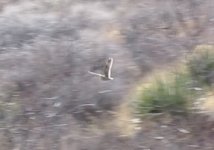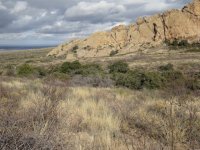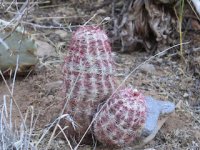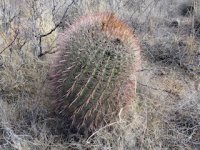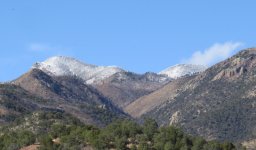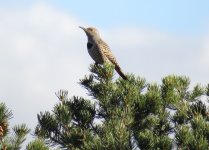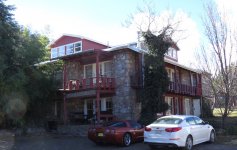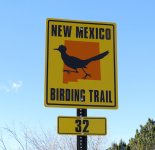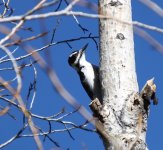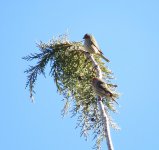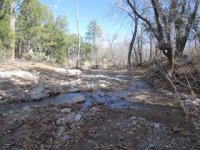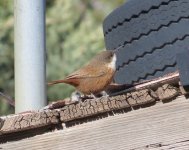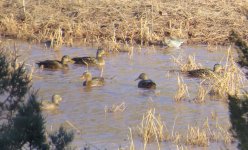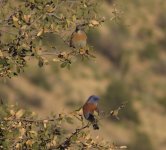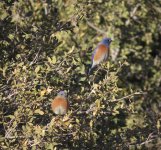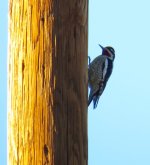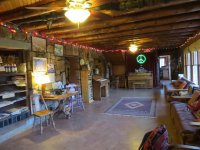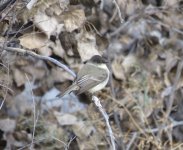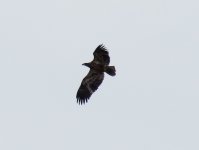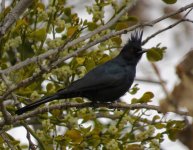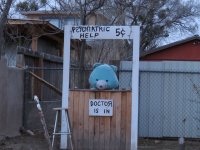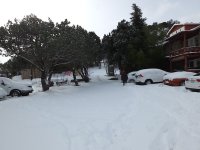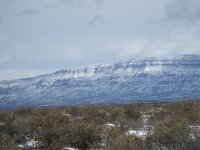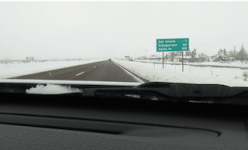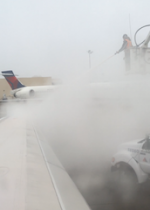Hamhed
Well-known member
Dec 24:
There was no room in our original plans for visiting Las Cruces, just shy of the Texas border but a contact we’d made in signing up for the Caballo Christmas Bird Count let us in on a recently discovered gathering of Long-eared Owls. These Owls are difficult to see in any other season but in the winter, they often gather together to roost in communal groups. Having access to one of these gatherings was not an event we could turn away from. In the morning then, we drove south about two and a half hours to an area east of Las Cruces by the name of Dripping Springs Natural Area. The lies at the base of the Organ Mountains, a natural playground for rock climbers and hikers. For us, a certain juniper and oak filled arroyo was to be our morning’s focus.
After checking in at the Visitor Center, we followed explicit directions and found ourselves in a narrow, dry wash or arroyo. The wash was shallow at first then deepened until the ground was well above our heads. We picked our way carefully and as quietly as possible, sharing the space with several Canyon Wrens. Scaring the first owls took longer than we expected and we wondered if we had chosen the wrong arroyo. Eventually though, owl after owl flew out of the dense scrub away from us but we barely got anything but a quick view. We climbed up out of the arroyo, on opposite sides, hoping to see them from above but they would always manage to see us first. Still, from this vantage point, we got much better looks and I managed a couple of very short videos. The cactus in the surrounding desert was distracting in the many varied forms so when we’d felt like the owls needed no more disturbance, I focused for a while on the plants around me. Not just for photos either; most were highly formidable in their defense systems.
A Hermit Thrush and Mockingbird were seen, feeding on what I think were fruiting hackberry trees. A pair of Ruby-crowned Kinglets and a Spotted Towhee shared the parking lot with us as we left for our original destination, two hours back north.
In hindsight, there was another longer and larger arroyo that led to a canyon behind the Visitor Center that may have been easier to explore. Had we failed to see any owls, we might have stayed to investigate that option.
There was no room in our original plans for visiting Las Cruces, just shy of the Texas border but a contact we’d made in signing up for the Caballo Christmas Bird Count let us in on a recently discovered gathering of Long-eared Owls. These Owls are difficult to see in any other season but in the winter, they often gather together to roost in communal groups. Having access to one of these gatherings was not an event we could turn away from. In the morning then, we drove south about two and a half hours to an area east of Las Cruces by the name of Dripping Springs Natural Area. The lies at the base of the Organ Mountains, a natural playground for rock climbers and hikers. For us, a certain juniper and oak filled arroyo was to be our morning’s focus.
After checking in at the Visitor Center, we followed explicit directions and found ourselves in a narrow, dry wash or arroyo. The wash was shallow at first then deepened until the ground was well above our heads. We picked our way carefully and as quietly as possible, sharing the space with several Canyon Wrens. Scaring the first owls took longer than we expected and we wondered if we had chosen the wrong arroyo. Eventually though, owl after owl flew out of the dense scrub away from us but we barely got anything but a quick view. We climbed up out of the arroyo, on opposite sides, hoping to see them from above but they would always manage to see us first. Still, from this vantage point, we got much better looks and I managed a couple of very short videos. The cactus in the surrounding desert was distracting in the many varied forms so when we’d felt like the owls needed no more disturbance, I focused for a while on the plants around me. Not just for photos either; most were highly formidable in their defense systems.
A Hermit Thrush and Mockingbird were seen, feeding on what I think were fruiting hackberry trees. A pair of Ruby-crowned Kinglets and a Spotted Towhee shared the parking lot with us as we left for our original destination, two hours back north.
In hindsight, there was another longer and larger arroyo that led to a canyon behind the Visitor Center that may have been easier to explore. Had we failed to see any owls, we might have stayed to investigate that option.




